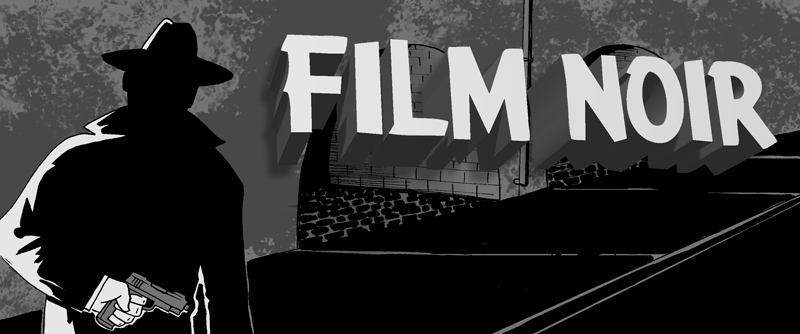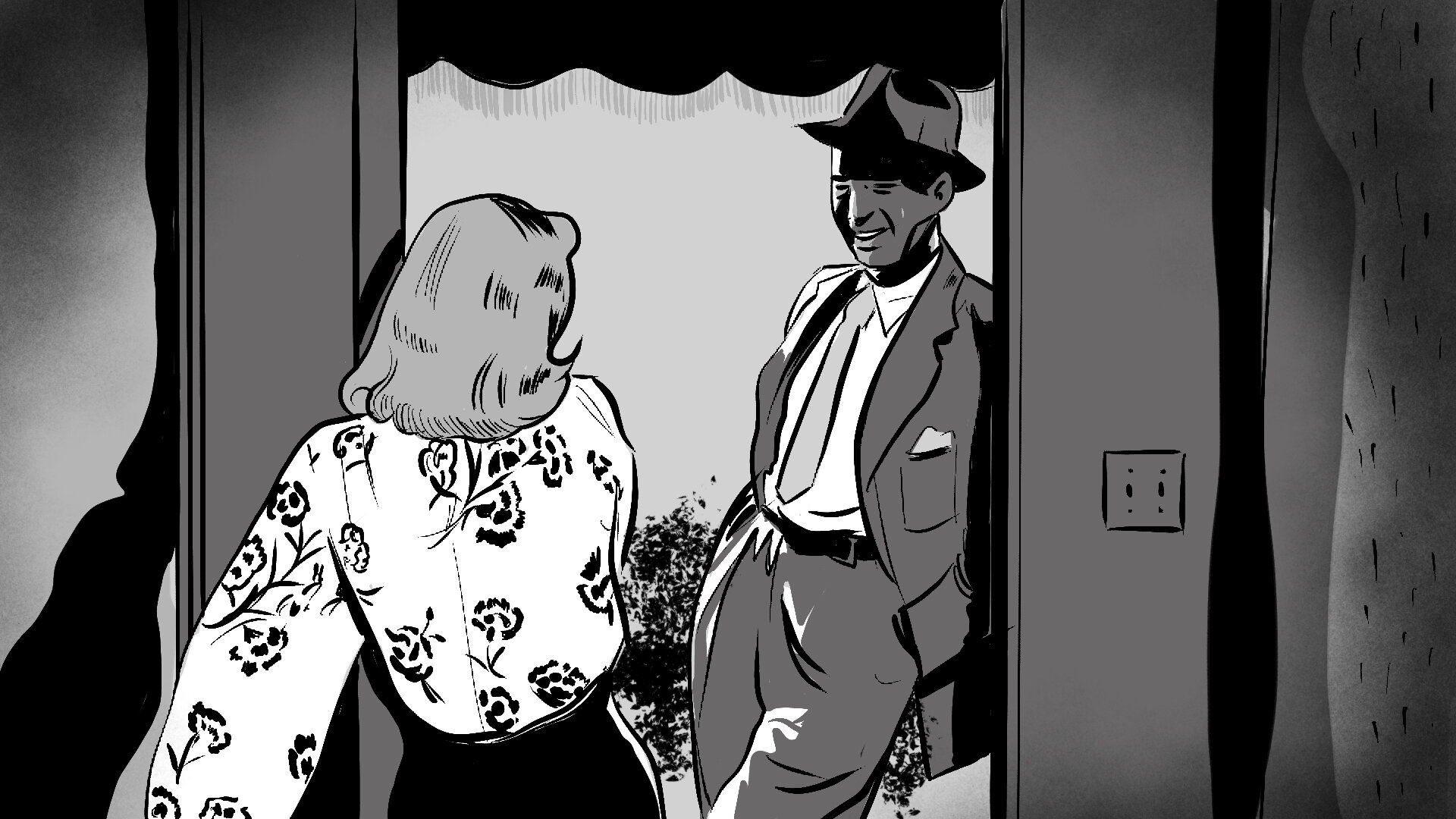Genre Film
BOXOUT DEFINITION: Genre is simply a term for a collection of films grouped together by a set of characteristics that they have in common.
In the Golden Age of Hollywood, Genre films were a popular distraction from the grim realities of life. A few of the great American Genres include:
Western
Horror
Romantic Drama/Comedy
Action/Adventure
Crime/Gangster
When deciding which group a film belongs to, there’s a few different ways of categorising them.
Audience Response
Setting
Iconography
Plot
Characters
Style
Audience response
Firstly, what do the audience (and critics) say it is? If the audience finds it funny instead of scary, maybe it’s a comedy?
Setting
The locations of the film often determine the genre - for example a film set in space will likely be a sci-fi. A western might be a film set in the dusty plains of the US. Of course, filmmakers play with these conventions (See Joss Whedon’s “Firefly” - a space Western!), but in general, setting is. something you might expect to associate with a particular genre.
ICONOGRAPHY
The symbols, props, decorations and basically, the objects in the film that carry meaning associated with that genre. For example, the gun and hat are a part of westerns. A crucifix might be used in a horror film to contrast the evil theme, by showing a symbol commonly associated with good. It might even be turned upside down as in the Conjuring, to rebrand its meaning.
Plot
Genre films also share elements of the story. This is one of the most recognisable aspects of the genre for the audience, who are aware they’ve seen the teenagers get massacred before, or the hero save the day against the terrorists. They expect nothing less in a way! Changing the story expectations can be justified, but to be different, you have to do it well!
Characters
Similar to plot, there are character types you expect to see in a film. Horror commonly has the stereotypical jock, nerd, brain, princess combo of high-schoolers. This is something that Cabin with the Woods (2011) plays with. That’s Joss Whedon again, by the way, but just because he’s known for playing with genre expectations (and directing the Avengers) doesn’t mean he’s the only one who can do it. Get creative with your use of these established stories.
Style
Style is a range of artistic, filmic choices that the production team make. They amount to a particular look (and feel) to the film. For the purposes of this section, we’re going to zoom in on the stylistic choices of our chosen genre, Film Noir, in terms of lighting especially, alongside these other genre features.
FILM NOIR
(1940-1958)
Film Noir is a sub-genre, fitting into the Crime/Gangster category. The memorable tropes and iconography of Film Noir have outlasted its active production period many times over. In this chapter we will explore the style and socio-political context of Film Noir, examine key films and discover that perhaps Noir never really died after all…
WHAT IS FILM NOIR?
Many students reading this book will not have encountered this term, but will be more familiar with noir than they first realise. French critic Nino Frank coined the term ‘film noir’ (translated as ‘black film’) when referring to American crime films of the 1940s, recognising their darkness of their tone as well as the literal darkness of their imagery. Film historians have argued as to whether Film Noir is a genre or movement; the consensus seems to be that it is neither – it is a style.
Film noir were crime films, almost always featuring a male protagonist who ends the film as a broken man – these films were fatalistic. Perhaps a natural development once the gangster film had run its course, film noir largely hid its violence in the shadows – forced by both the censorship of the Hays Code and by budgetary constraints. The imagery of long coats and fedoras, plus smoke-filled city streets filmed at oblique angles endure to this day.
Film noir was not restricted to crime films – Westerns like Blood on the Moon (1948), melodramas like Sunset Boulevard and science-fiction films like Invasion of the Body Snatchers (1956) are widely accepted to be films noir.
By ‘film noir’ we consider more than the film’s genre. We examine its lighting, character types and narrative structure, particularly its ending.
Director Christopher Nolan
The film noir cycle ended with 1958’s Touch of Evil, directed by and co-starring Orson Welles. Perhaps too much bleakness saw noir fall out of fashion as the film musical gave a more positive experience on audiences of the time.
Noir did spread to other parts of the world. The French, who named the style, made several notable noirs of their own. Legendary Japanese directors Kurosawa and Imamura made a number of films noir too.
But is noir dead? Certainly not. Noir modernised, developing into Neo-Noir of contemporary LA in 1970s classics like Body Heat and Chinatown, influencing modern directors like Christopher Nolan (Memento and The Dark Knight trilogy) and then into the esteemed Nordic Noir books, films and TV shows.
SOCIO-POLITICAL CONTEXT
Film noir played out in front of the backdrop of World War II. As America found itself involved in a major global conflict, the tone of many of its films took a turn for the darker, reflecting concerns over world events. This included the psychological effects of the war on those returning from the action and on those left behind; the world was far less innocent than it had been. Film noir protagonists frequently had memory problems or found that they couldn’t trust the ones around them.
Meanwhile film budgets were limited during the war effort and filming equipment became scarcer, forcing productions to use fewer lights and lower-quality film stock. Low-key lighting became prevalent but also suited the types of stories now being told, while chiaroscuro lighting of many artworks could also be considered an influence. The writing of hard-boiled ‘pulp fiction’ was adapted into many films from this period, such as the work of James M. Cain (Double Indemnity, The Postman Always Rings Twice), Raymond Chandler (The Big Sleep) and Dashiell Hammett (The Maltese Falcon).
World War II also affected the filmmakers who made key film noir movies. Not only did German Expressionist films – with their oblique angles and low-key lighting – serve as a visual influence on film noir, but many German filmmakers fled to Hollywood to escape the Nazis. They brought their technical talents with them, of course. Billy Wilder, who directed two key films noir in Double Indemnity and Sunset Boulevard, was an Austrian Jew who left for France, then America, when the Nazi part rose. Metropolis director Fritz Lang, who directed films noirs The Woman in the Window and Ministry of Fear (both 1944) and one of Metropolis’ cinematographers Karl Freund were others who followed Wilder’s path.
Censorship and the Hays Code affected the portrayal of on-screen violence, meaning that these often occurred in the shadows or just off-camera. This perhaps added to Film Noir’s effectiveness – when Walter Neff commits the key murder in Double Indemnity, the audience hears it but sees only a close-up of his lover (and the murder’s instigator) Phyllis Dietrichson’s cold, emotionless reaction - arguable a more chilling visual that had we seen the murder take place.
Many films noir featured a femme fatale character – a cold, manipulative woman who tricks an unsuspecting male into committing a crime of passion and then taking the fall. This is sometimes seen as a reflection of male lack of trust in women; men returning from World War II sometimes found their former jobs had been taken by women, who now empowered were not happy to relinquish their new societal roles.
Later films noir reflected the paranoia of the Cold War era. Once WWII ended, American and the USSR found themselves in a growing nuclear arms race. The threat of a nuclear war between the nations grew, peaking with the Cuban Missile Crisis of 1962. Meanwhile, America’s fear of being infiltrated by Communist ideology saw the second ‘Red Scare’ last from 1947-57. Here, senator Joseph McCarthy ran congressional hearings to try and uncover communist sympathisers in American society. This led to many filmmakers being blacklisted or jailed, while the paranoia of 1950s America can certainly be seen in many films noir, such as Kiss Me Deadly and Pickup on South Street.
Double Indemnity: The Noirest Noir
The classic features of a noir, above are exemplified in Billy Wilder’s 1944 film, Double Indemnity.
Create a presentation using the Directors notes above, taking screengrabs from Double Idemnity. There are clips from the film available on the 101 Films section of this site that might suffice, but it is definitely recommended to at least watch the entire film once. It is a true classic.
For each aspect of the directors notes, explain how Double Indemnity used these techniques to create the Noir style.
INTERNATIONAL FILM NOIR
While Film Noir was identified and named by the French, it is often seen as only American cinema. This is not the case. Filmmakers around the world also made film noir. In France, inspired by what they saw from American filmmakers, developed many key films noir of their own. The occupation of France during World War II offered rich subject matter for them to explore in their own films, while French cinema has always had a fine tradition of crime films (known as policiers).
Henri-George Clouzot was a key figure in French noir, with his films Les Diaboloques and Le Corbeau, while the first film adaptation of The Postman Always Rings Twice was actually a French film that predates the accepted noir period – Le Dernier Tournant / The Last Turn (1939, d: Pierre Chenal). Jean-Pierre Melville was another key director, particularly with his works Le Doulos (1962), Le Samourai (1967) and Le Cercle Rouge. Key directors of the French New Wave also paid a debt to film noir, notably A Bout de Souffle / Breathless (1962, d: Jean-Luc Godard), in which the protagonist actually comments on wanting to be like Humphrey Bogart. Godard’s Alphaville is a sci-fi/film noir hybrid.
In Asia, Akira Kurosawa directed several notable films noir, though film students and scholars often focus on his better-known samurai films. Drunken Angel (1948), Stray Dog (1949), The Bad Sleep Well (1960) and High and Low (1963) include many recognizable film noir motifs, while also explore the harsh realities of post-war Japan.
Genre Study
Other genres, as we’ve seen at the beginning of this chapter, also have their own conventions and cultural context.
Compare two films from different cultural contexts, according to the genre features of a genre of your choice. Don’t forget to consider:
Audience Response (How is it categorised by the audience and critics?)
Style (Filmic choices in the lighting, camera, mise en scene, sound etc)
Setting
Iconography
Plot
Characters
Film Task: The MacGuffin
We’ve already established that many of the films in Hollywood were made quickly, using a production process designed to efficiently create a product. Film Noir’s made up a significant number of these “B” Movies. Often the scripts for Film Noir were known as “boiler plate” because they were template-like. Very basic and generic. The filmmaking process could turn these relatively bland stories into something meaningful.
One of the techniques used to drive the narrative was a “Macguffin”. Hitchcock had used this term for an object in a film that didn’t actually mean much, but drove the characters motivation. Any object that lacked actual use, but was the object of much of the plot qualified as a Macguffin. A classic example is the Maltese Falcon (1941). The falcon in the name is a statue that the characters pursue. 50 years on, in the neo-noir “Pulp Fiction”, (1994) uses a briefcase, of which the contents are never seen. It’s pure motivation.



















